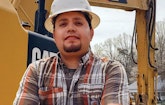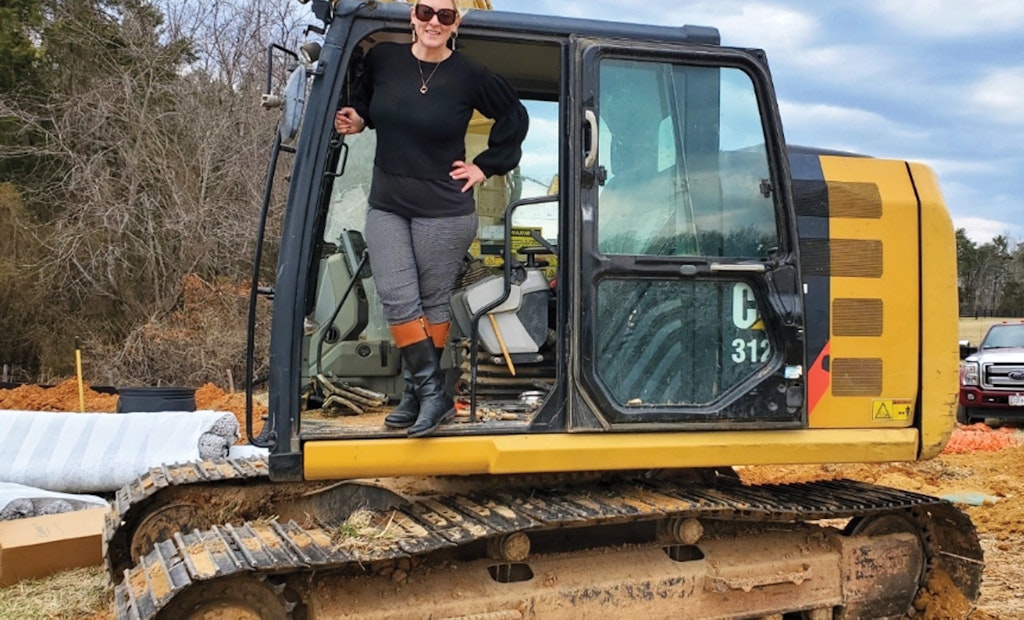Interested in Education/Training?
Get Education/Training articles, news and videos right in your inbox! Sign up now.
Education/Training + Get AlertsIn States Snapshot, we visit with a member of a state, provincial or national trade association in the decentralized wastewater industry. This time we learn about company members from the Virginia Onsite Wastewater Recycling Association.
Name and title or job description:
Ronnie Thomas, principal owner and consultant, former president
Mark Burns, president and owner
Charlie Seamon, vice president and owner
Business name and location: Triple R Construction Co., Manassas, Virginia
Services offered: We do septic installations, maintenance and repair. We’ve put in close to 10,000 systems.
Age: Thomas, 63; Burns, 64; Seamon, 60
Years in the industry: Thomas, Burns and Seamon — all since the mid-1970s.
Association involvement:
Thomas: I was on the board of the Virginia Onsite Wastewater Recycling Association back in the mid-1990s, and I’ve been back on the board for about a year. I’ve also been on the NOWRA - National Onsite Wastewater Recycling Association Board of Directors and the Board of Appeals for the state of Virginia Department of Professional and Occupational Regulation.
Benefits of belonging to the association:
Thomas: From an install standpoint, it certainly improves your KSA — your knowledge, skills and abilities. It’s very informing, and I gain a lot of knowledge.
Biggest issue facing your association right now:
Thomas: A big issue is improving communication both to members and with the local health departments. The more information we can provide the members from a regulatory standpoint, the better. That’s a big part of what we try to do. As far as the health departments, there are so many things associated with all this — inspections, enforcement, all the things the health department does nowadays. In northern Virginia, we deal with about seven different county health departments and the regulatory requirements will vary a little bit from county to county.
Our crew includes:
Burns: I love all of the 24 people who work with us. Joel Swicegood, our estimator; Esther Burns, our bookkeeper; and Dezi Thoden, our newest addition, all work in harmony to keep the wheels turning. Crew leaders include Herick “Misial” Diaz (1997), Jose “Senior” Espinol Sr. (1997), Jose “Leon” Garcia (2002), Daniel Randall (1993), Edwin Chua-Lemus (1997) and Chadwick Garrison (2006). And we receive more compliments about Isail “Chico” Marquez (2014), our maintenance leader, than anyone.
Typical day on the job:
Thomas: My primary role now is to bring work in the door wherever I can. As the former president, I ran day-to-day operations for a number of years, and now I’ve been trying to get some more work. And I’ll go out and look at something if it is problematic.
Burns: Mine is a reactive position: What contract needs to be read and signed, what service call needs to be taken care of, and what job has problems? Those are the types of fires I put out.
Seamon: I’m kind of the day-to-day field general. I make sure the guys have their job assignments. I resolve issues during the workday and any problems that need to be attended to, get equipment moved to the sites, and handle issues builders may have if they have a job that needs something in particular.
The job I’ll never forget:
Burns: We installed a low-pressure distribution system for an elementary school in Haymarket. It was the first time we had a low-pressure distribution of that magnitude — 6,000 gallons a day, if I recall right — and it was a huge learning experience for us as far as collaborating with the engineers for installing the best design. It was originally designed with 9.7% flow variation where 10% was the limit, and there wasn’t enough cushion for any errors that occurred in the field. So, we collaborated with the engineer, redesigned it, worked with them and made sure we got distribution the way it was intended. It was successful and lasted until the school was hooked onto sewer. It was hugely important to us, and we’ve continued that collaboration with the engineers we work with.
Seamon: We had a job to install a new system at a shopping center in Great Falls. There was limited space to install the components and an underground power line that had to be moved. The new tanks had to be set with a crane. The power company came in and set up a temporary power line and took away the separation we needed between the crane and the power line, with the potential danger of the power arcing over to the crane. The power company worked with us to insulate those wires.
My favorite piece of equipment:
Thomas and Seamon: John Deere 410G backhoe. It’s a good all-around machine for what we ask it to do. It has plenty of power. It holds up very well. It doesn’t have a whole lot of maintenance expenses with it. It’s a good piece of equipment that’s pretty stout.
Burns: If you’d asked that question in 1980, I would have said a Case 580B Construction King backhoe, but these days the John Deere 331 skid-steers allow us to leave a polished product — and you are what you leave behind. If you leave a good-looking job, that’s how people perceive you. Also, the innovation of laser technology has been huge to us for accuracy in determining elevations of everything and making sure we have proper fall and positioning products. Of course, on any given day your favorite machine is what you’re on that day.
Most challenging site I’ve worked on:
Thomas: We did a community drip system that was going to be taken over and operated by the Fauquier County Service Authority after we got done. It was a very challenging site to work with because the dripfields themselves were scattered all over God’s creation. What sticks out in my mind is I got a lot of compliments on David Hoyle, crew chief, who really outdid himself there.
The craziest question I’ve been asked by a customer:
Thomas: One was, “Why are all these nonbiodegradable products in my system?”
Burns: The funniest, most unusual one for me was from a lady who had purchased a home and had the alarm go off. I checked it out and it had been a running toilet. We got it corrected, but she asked me, “Where does all the water from that pump tank go?” I said, “Out there in the front yard: There’s a soil treatment area out there.” She goes, “What?! You hillbillies are crazy.” That was where her daughter played. She sold her house and moved back to New York.
Seamon: After installing an AquaO2 Wastewater Treatment Systems mound system, the owner told us to move it because it blocked their view of the lake — a $50,000 job. Not happening.
If I could change one industry regulation, it would be:
Thomas: I would like to see more consistent implementation of state regulations. The county health departments implement the state regulations but only to the extent the local regulations allow them to, so you’ve got a fair amount of variation from one health department to another.
Burns: In northern Virginia they’re trying to privatize, and as they do, it’s challenging to see which regulatory authority you have to answer to. It might be an engineer, soil scientist, individual health department or all three. And it changes. But it is what it is — it’s growing pains.
Seamon: I’d like to see limited time to have an inspection on the installed systems. There are times around here when I can’t get an inspection for a week. Our jobs are very weather sensitive, and at times we have to have two, three inspectors inspecting the same thing, so it takes a little coordination.
Best piece of small-business advice I’ve heard:
Thomas: My father always told me you must have a plan when you start a job of any type.
Burns: Be clear in your expectations of the people you work with. We put up a sign that’s just for our guys, and it’s my expectation: “Triple R — we do very good work.” They see that sign every day, and I expect them to fulfill it. It’s been a successful recipe so far.
Seamon: Pay attention to the fine print in a contract. If you’re not careful, you could misprice your quote.
If I wasn’t working in the wastewater industry, I would:
Thomas: Be a car mechanic.
Burns: Be retired and traveling in my old 1964 Ford Falcon that I’ve had since 1972.
Seamon: Be traveling the West — in the back of Mark’s Falcon!
Crystal ball time – This is my outlook for the wastewater industry:
Thomas: I see continuing education for designers, onsite soil evaluators, installers and professional engineers. Everybody needs it, not just installers and designers.
Burns: I see it as improving. It’s constantly growing. Innovative ideas are challenging, but I think we, with close collaboration with academia, can successfully implement those ideas. We’re going to have to do a lot better with taking care of the systems. But the education of homeowners as the end user has advanced tremendously in the last few years, and I look to see that continue to grow.








